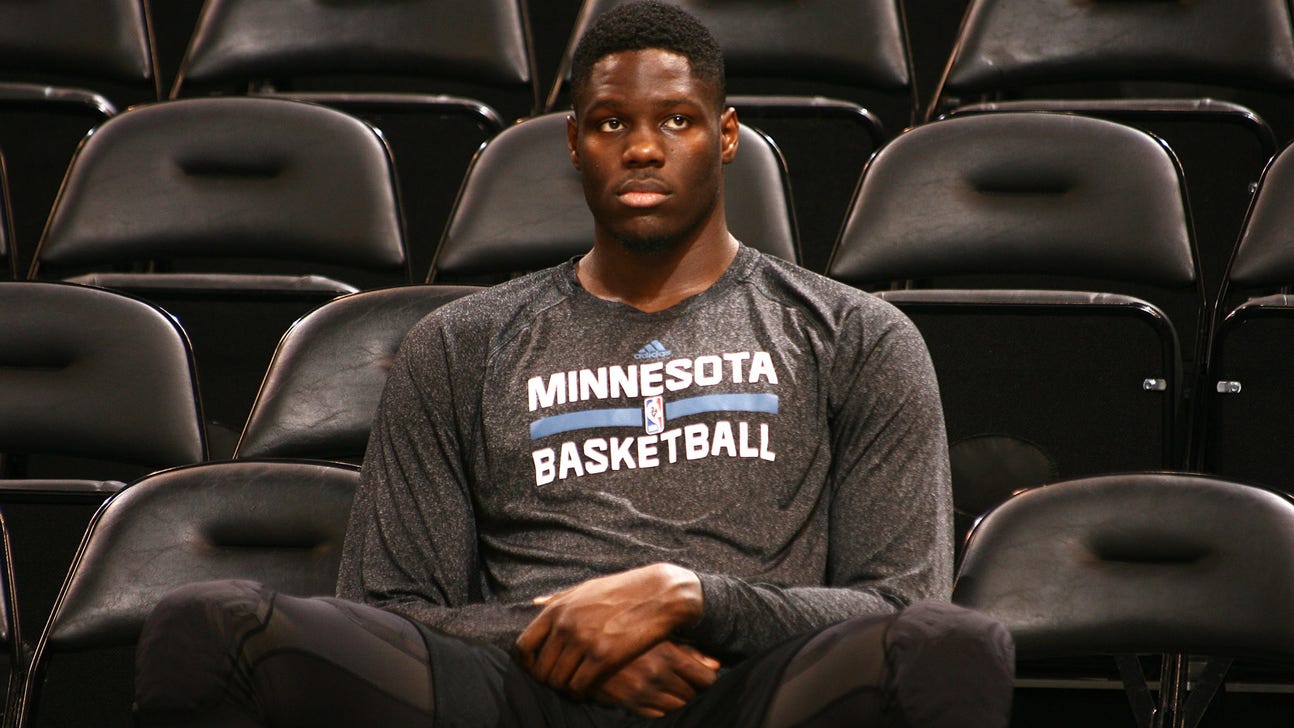
Wolves season report card: Anthony Bennett

This is the fifth in a 15-part series evaluating each Timberwolves player's performance during the 2014-15 season. Find the entire series here.
Having spent so many days in the doghouse, Anthony Bennett has to be getting stir-crazy by now.
Healthy and hopeful ahead of a fresh start in the Twin Cities, the Timberwolves power forward was initially perceived as an underrated facet of the Kevin Love-Andrew Wiggins swap -- a high-upside trade chip who, in the right situation, could turn things around after a tumultuous rookie season in Cleveland. For a few short days, Bennett did.
Before long, though, the 2013 No. 1 overall pick's unruliness landed him back in the kennel. Two seasons ago, injuries, ailments and the resulting fatigue had him there. But for the better part of his sophomore campaign, Bennett had no physical excuses.
Instead of taking a get-right, get-healthy summer and carrying it over past a strong preseason, Bennett displayed maddeningly ineffective tendencies that included taking defensive possessions off and settling for long-range 2-pointers. That's the opposite of what coach and president Flip Saunders -- and, in all practicality, Bennett's 6-foot-8, 245-pound frame -- dictated.
Hence the many weeks spent in the doghouse.
"This summer's going to determine, really, where he's at," Saunders said. "This is a huge summer for him to kind of make or break."
Here's why.
Scoring: D+
At first, Bennett didn't give Saunders much reason to carve out minutes for him behind starting four-man Thaddeus Young. Then when Young was traded for Kevin Garnett at the deadline, Bennett sprained his right ankle and missed 24 of Minnesota's final 28 games.
But when the young buck from Canada was on the floor, he too often sought glamour when Saunders wanted grit.
Bennett shot 42.1 percent from the floor and 30.4 percent from 3-point range. Those numbers, mostly the result of binge-jump shooting, are becoming of a second-round pick that cracked the roster with a strong training camp -- not a guy who shook up every draft board two summers ago when Cleveland took him first overall. That, to be fair, wasn't Bennett's decision, but a high first-rounder with his body type and leaping ability should be capable of attacking, getting his hands dirty and accumulating points the hard way, Saunders said.
Especially in the paint. There, Bennett shot 45.4 percent -- 25 percent in the lane and outside the restricted area. The result, when mixed with a glut of ill-advised long 2s: 5.2 points in 15.7 minutes per game, compared to 4.2 while averaging 12.8 minutes per game as a rookie.
Rebounding: C+
At 6-8, Bennett gives up an inch or two to many NBA power forwards. Asthma, sleep apnea and vision problems further aided to his inability two seasons ago -- especially when it came to being physical.
But Bennett underwent a handful of operations to get his body right last summer. He also spent a few weeks in California with the man they call "Crazy Frank," who helped Bennett, Shabazz Muhammad and former Wolves center Ronny Turiaf shed some weight and enhance their conditioning.
The work helped Bennett become more of an imposing presence on the glass -- that is, when he chose to be. His 8.7 rebounds per-36 minutes represented negligible improvement from his rookie year (8.4). Overall, Minnesota could've used more out of him.
Defense: D
And that fact carries over to the other end of the floor. If a guy like Bennett embraces a grinder's role, he can be an important piece in the league for years. If he doesn't, he might be staring at a turned-down team option three years into the league, as could be the case with Bennett if he's not better in 2015-16.
The place to start is on defense.
Bennett's not yet a shot blocker (0.3 per game). He doesn't create turnovers (0.5 steals per game). He isn't adept at contesting shots (opponents shot 52.3 percent against him, according to NBA player tracking data).
But most of all, Saunders often chided Bennett for a lack of defensive energy. That's not yet a part of the game that Bennett's wrapped his bulging, muscular arms around, and, until he does, the B-word associate with his name is likely to remain.
Overall: D
In a world that's quick to judge and quicker to ignore nuance, we're not quite ready to call Bennett a bust yet. But as Saunders alluded to, if the 22-year-old doesn't come back much improved, the conversation should gain steam.
That was the crux of Bennett's talks with the front office during exit interviews last month.
"I'm pretty sure that goes for everybody," Bennett said. "But for myself, I'm up to the challenge. Just go out hard the whole summer."
It'll include work with Minnesota's summer league team, more sessions out west with trainer Frank Matrisciano, and participation in the Pan-American Games and FIBA Americas Championship as a member of Team Canada. It'll behoove a fully healthy Bennett -- who came back from his ankle injury and played in the Wolves' final game -- to play so many games, Saunders said.
But the coach, president and part-owner added a warning when it comes to Bennett's position, which also features raw, inconsistent rookie Adreian Payne and possibly a 39-year-old Garnett if he decides to play again.
After what Saunders saw as Minnesota posted the league's worst record, the club's power forward of the future may not be on the roster right now.
"I couldn't say that. I couldn't say I do or I don't (have that player)," Saunders said. "I think you always put yourself in a situation -- I've always believed you want to make yourself better.
"I'm not going to lock in anything when you win 16 games on anybody, to be honest."
Next: Adreian Payne
Follow Phil Ervin on Twitter